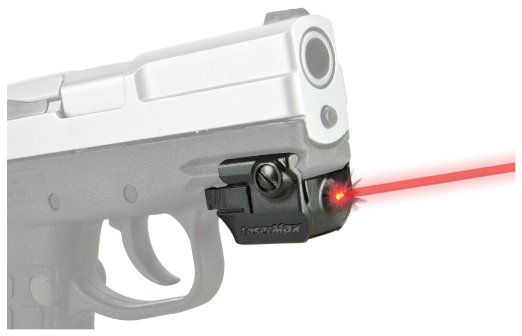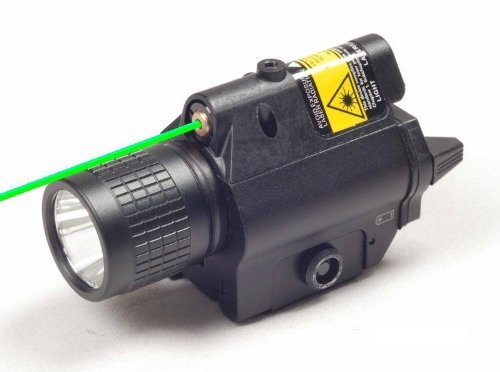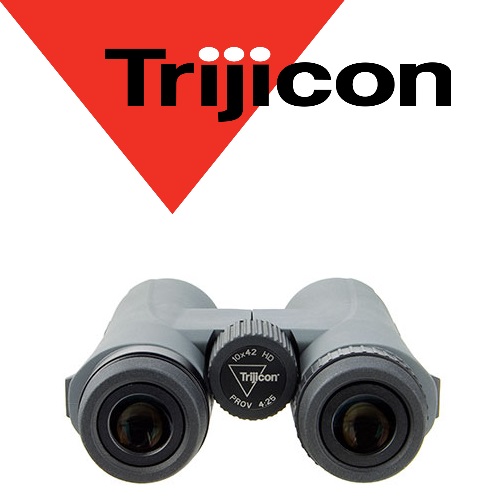Table of Contents
Several types of sights fall under the category of ‘red dot’ sights: reflex sights, holographic sights, and laser sights. All three of these are non-magnifying sights, and they achieve target acquisition by marking the target with a red (sometimes green) dot, cross, etc.
Laser vs Reflex vs Holographic sights

While reflex and holographic sights utilize a system of optical glasses and a superimposed image, the concept behind non-magnifying laser sights for firearms is much more straightforward. With a laser sight, a beam of visible light (or at times invisible, such as infrared light) is emitted from a device which is aligned with the barrel. The beam then bounces off the target, and it appears to the viewer as a small dot.
Lasers are powerful, concentrated beams of light. If the laser’s field is unobstructed, it can reach very far. Practically, though, lasers are more effective at close-range shooting. Watching that dot can give you a great idea of where that next bullet is going to hit.
A laser beam shoots straight forward. The shooter simply places the dot on the target, and is good to go. However, some things cannot be accounted for simply by aiming a laser: windage, ballistics (bullet drop), barrel alignment (or lack of alignment), and target movement, to name a few. This is part of the reason why lasers are great for home defense or police beats, but less suitable for long-range targets.
Many of the laser sights available in today’s market use a red laser diode. Some, as mentioned earlier, make use of an infrared diode. This enables the dot to cross the field unseen, and become visible only to those with night vision capabilities. A shooter with night vision goggles and an infrared laser will be able to pick off targets without them even knowing they were targeted. Some systems combine both visible and invisible light, giving the shooter the best of both worlds.
Laser Sights for Handguns

Of the wide selection of sights and scopes available for firearms, it is lasers that are the most handgun-oriented. Laser sights are meant primarily for smaller firearms, but this doesn’t mean that they are less effective or inferior in any way. Holographic sights, telescopic sights, and reflex sights all serve different uses.
One big advantage you get with a laser beam is that there is no need to look through an eyepiece, and there is no glass involved. It is probably the least “optical” of all the optic accessories. A laser beam is more like an assistant. What does that mean? Well, it means that the beam is there to verify that you are on target. It is most certainly not there to replace the need to aim properly. Even if you have the greatest laser sight ever made attached to your pistol, you should still have the skills to back it up.
Attaching a laser beam to your gun should not alter the way you carry, your holster, your grip, or any other preexisting method of use. The only thing – literally, the only thing – which a laser beam should do is assist the shooter. If it is inconvenient, or uncomfortable, or if it simply does not do its job properly – trust me, you don’t need that kind of accessory.
This can be a temptation to some, since laser sights have the potential to be significantly cheaper than other kinds of sights. Remember not to compromise or sell your security short. If you are looking for a quality item, don’t settle for anything else. You get what you pay for, so choose wisely.
Popular Laser Beam Configurations for Sights
Traditionally, lasers were always red. In the 90’s, technological advances made it possible for lasers to come in green as well. Red lasers are great at night, but are less effective during the day time. Green lasers, on the other hand, are visible in day in night. Many companies are in the process of making the transition from red to green.

Laser beams come in several popular configurations. Some are mounted under or over the gun, via accessory rail. Some are grip-based, and can be activated simply by grasping the gun’s handle. Others are built right into the gun, replacing the factory recoil spring and rod, and utilizing a button for activation.
Lasers, like other optical accessories, can be zeroed for optimal performance. And speaking of optimal performance – there is an ongoing debate on lights VS lasers, and here are my two cents on that issue: if you are interested in having the best of both worlds, attach a light to your handgun as well as a laser. Some companies take it a step further, and produce laser/light combination accessories.
After all, what good is a powerful (but small) laser beam, if you can’t see anything to begin with? You’ll be looking at pitch darkness broken by a single small red/green dot. Again, the laser is more like an assistant, and not necessarily a target finder on its own. Of course, you can fire the gun on the strength of the laser beam, without knowing precisely where the target is – and, you may even get some nice groupings that way – but it may not be the best way to train.
When it comes to laser sights, the first name on many people’s list is Crimson Trace. The Crimson line of laser sights is rich and broad, with enough of a selection to accommodate any shooter.
Lasermax is another well-known company, who has been marketing its laser-related inventions since the late 80’s. Lasermax products are known for their precision and accuracy, which is why they are used not only in the firearms industry, but in the world of science and industry as well.
Other popular brands of laser sights include Sightmark, Ade Advanced Optics, and Truglo.
Whether you choose to go for the green or red beam, mounted or integrated, combo or straight up laser – what is important is that you take the time to train with your weapon, with and without the laser. Pimping out your gun is great, since it helps to strengthen the relationship between the weapon and the shooter. In that sense, accessorizing certainly does help the gun become your gun, and that counts for a lot. However, if you don’t take the time to get to know your sight, you may find that it doesn’t do its job when the time comes.


